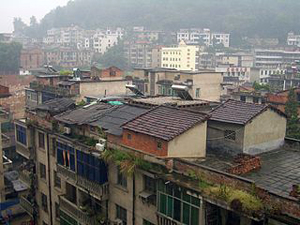
Asia is urbanizing rapidly. Currently, about half of all of its residents live in urban areas, and the number of urban residents in Asia is expected to reach 3.3 billion by 2050. The Asian Development Bank Institute (ADBI) estimated that at the current urbanization rate, 127,000 people are added to urban centers every day in Asia.
Such a rapidly growing urban population means that cities need to provide new housing for a large number of new residents every year, and governments throughout Asia are struggling to develop an appropriate reply to this challenge. Many low- and middle-income households in the region lack access to formal finance mechanisms, a prerequisite for housing finance. Moreover, economic success paired with urbanization has quickly increased the demand for housing in many countries, while the supply of housing has not kept pace. Supply is often constrained by a lack of developable land or uncertain land titles. As a consequence, land prices have increased rapidly as has the price of construction materials and services.
Access to housing has thus remained elusive for a large share of the population in Asia. A recent ADBI research project is attempting to create new knowledge to overcome this housing challenge, however. Analyzing the experiences of several developed countries that have previously confronted the challenge of increasing urban populations, ADBI identified 10 lessons learned from careful comparison of housing policies across these economies:
- Remove supply-side constraints to encourage housing markets. For a housing market to work properly, governments need to ensure the availability of developable land and remove uncertain property rights. Governments must also safeguard healthy competition among construction companies and suppliers of inputs.
- Give more people access to housing finance. Many people still have no or limited access to financial services. At the same time, commercial banks often see housing finance as a risk. Governments should work with both sides to ease people’s access to finance and to provide an environment that will make commercial banks eager to provide loans to would-be homeowners.
- Lower housing financing costs. Governments should help commercial banks grant mortgages at lower rates while ensuring that these measures do not result in a housing price hike due to inelastic supply or overborrowing by households.
- Mitigate risks of mortgage defaults due to interest rate volatility. Governments should consider offering fixed-interest rate mortgages to consumers through commercial banks to mitigate the risk of defaults due to interest rate volatility.
- Collect housing market data and make it publicly available. Most countries lack detailed market data. To ensure that interventions work, governments need detailed data on prices and other economic variables.
- Promote mixed use of buildings. Mixing residential and office areas, high- and low-income groups, and migrants and nonmigrants can help create a more cohesive urban society with positive spillovers.
- Finance upgrading of housing that reaches the poor. The poor in developing countries are typically unable to shoulder large mortgages. One option is to finance housing upgrades, which involves much smaller sums.
- Promote various tenure choices. Promoting homeownership has several advantages but also carries serious risks. Governments should therefore promote various tenure choices.
- Continuously improve housing quality while ensuring affordability. Housing policies should aim to continuously improve living quality. Beyond improving housing quality, these policies can also promote environmental goals, such as lower greenhouse gas emissions.
- Maintain existing housing stock to preserve pleasant living conditions. Government policies often aim to build housing without considering the need to maintain existing housing, resulting in rapid dilapidation, with severe consequences like higher crime rates. Refurbishing housing units are as important as constructing new ones.
The solution to the housing crisis goes far beyond providing new homes for urban dwellers and requires a rapid expansion of the entire urban infrastructure. For example, every household needs to have access to the clean water and sanitation as well as electricity. It is hoped that this research provides new insights for policy makers and implementers to make access to adequate housing a reality.
Photo: By User:Vmenkov (Own work) [GFDL or CC BY-SA 3.0], via Wikimedia Commons








Comments are closed.